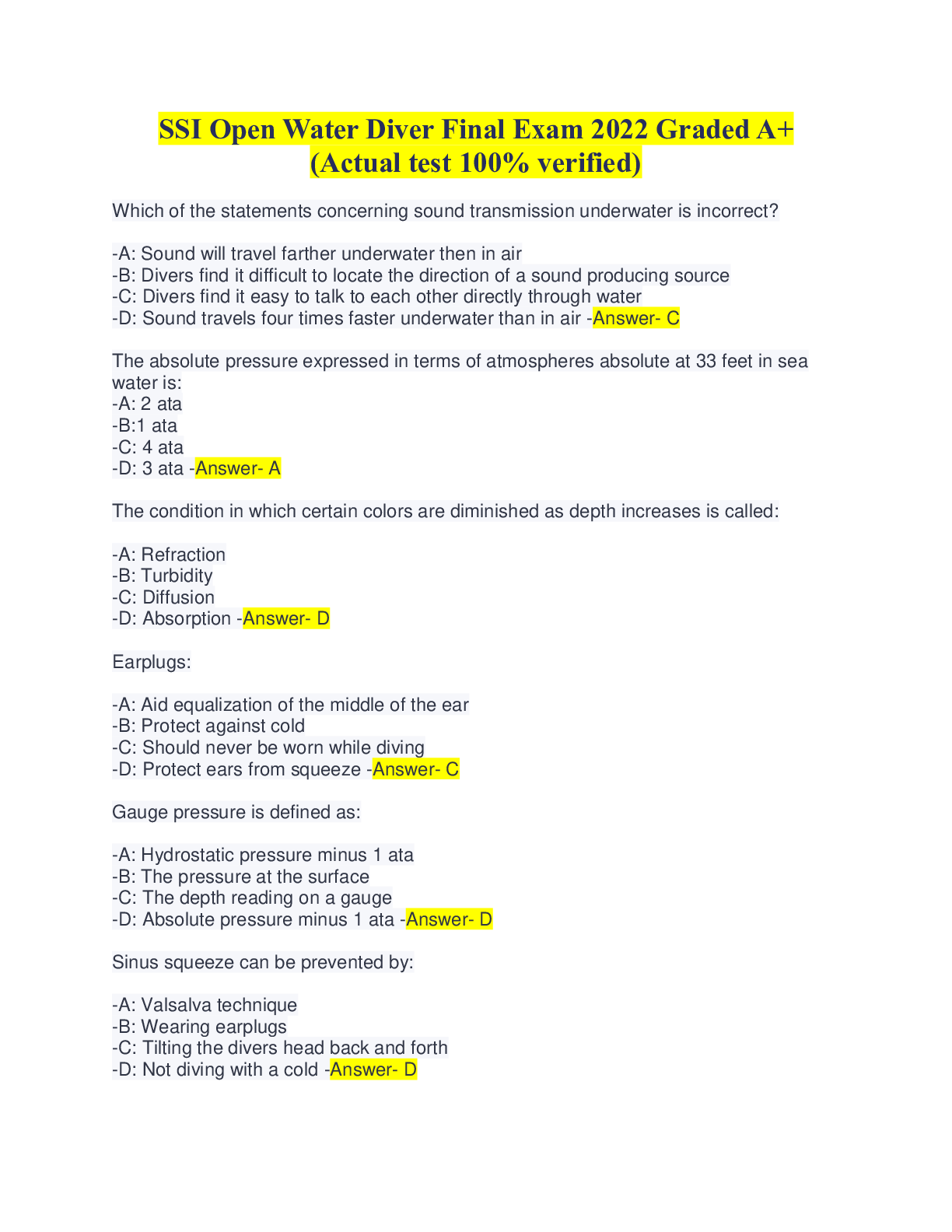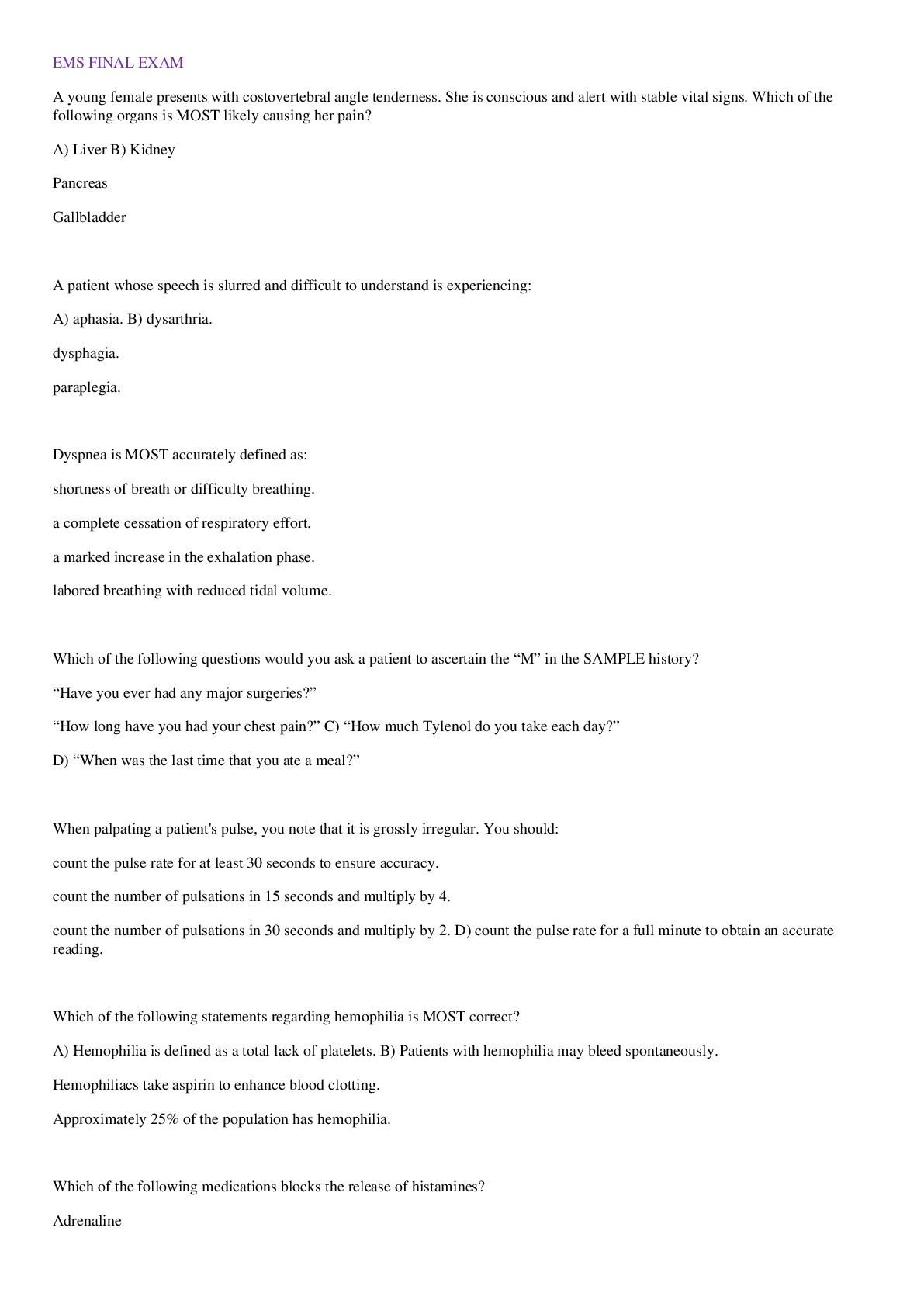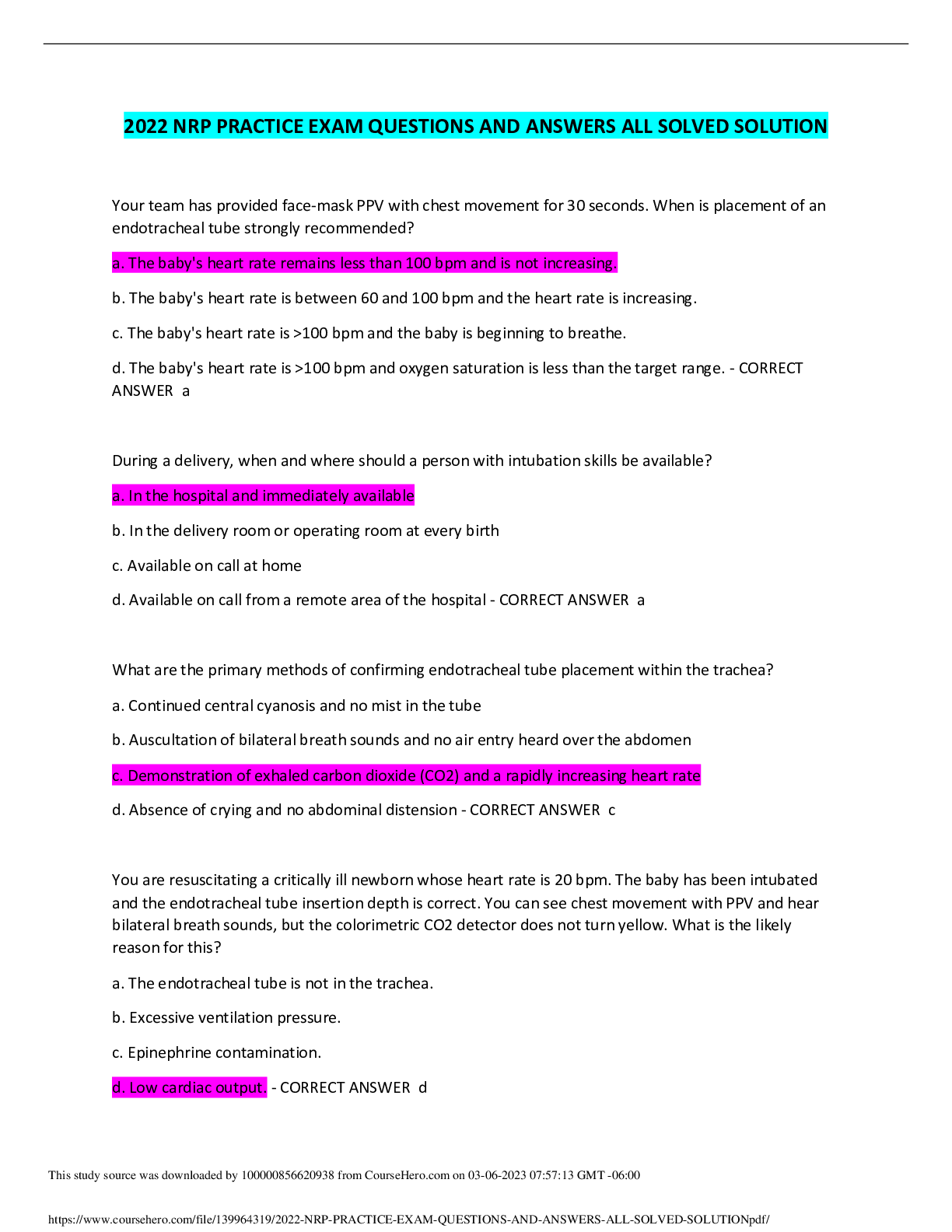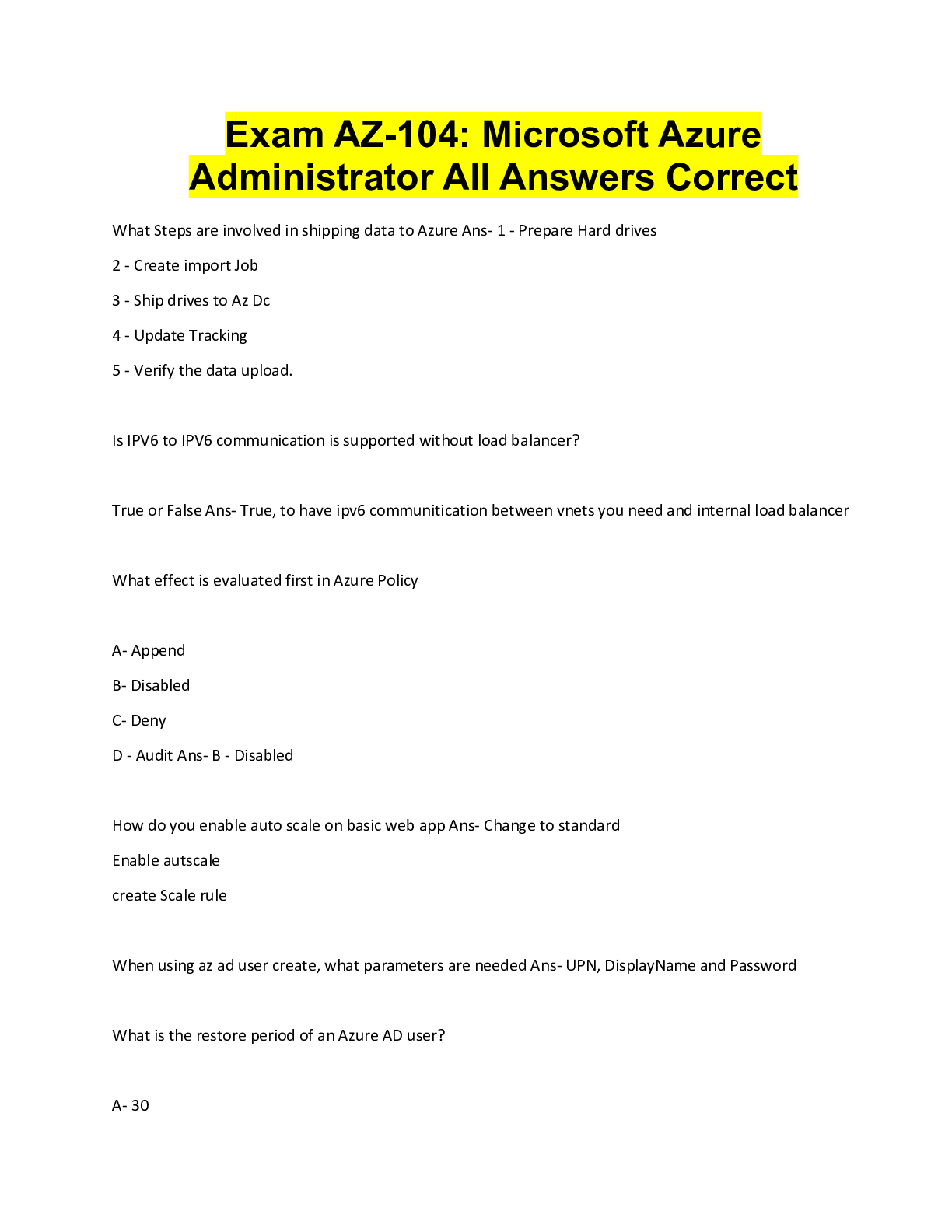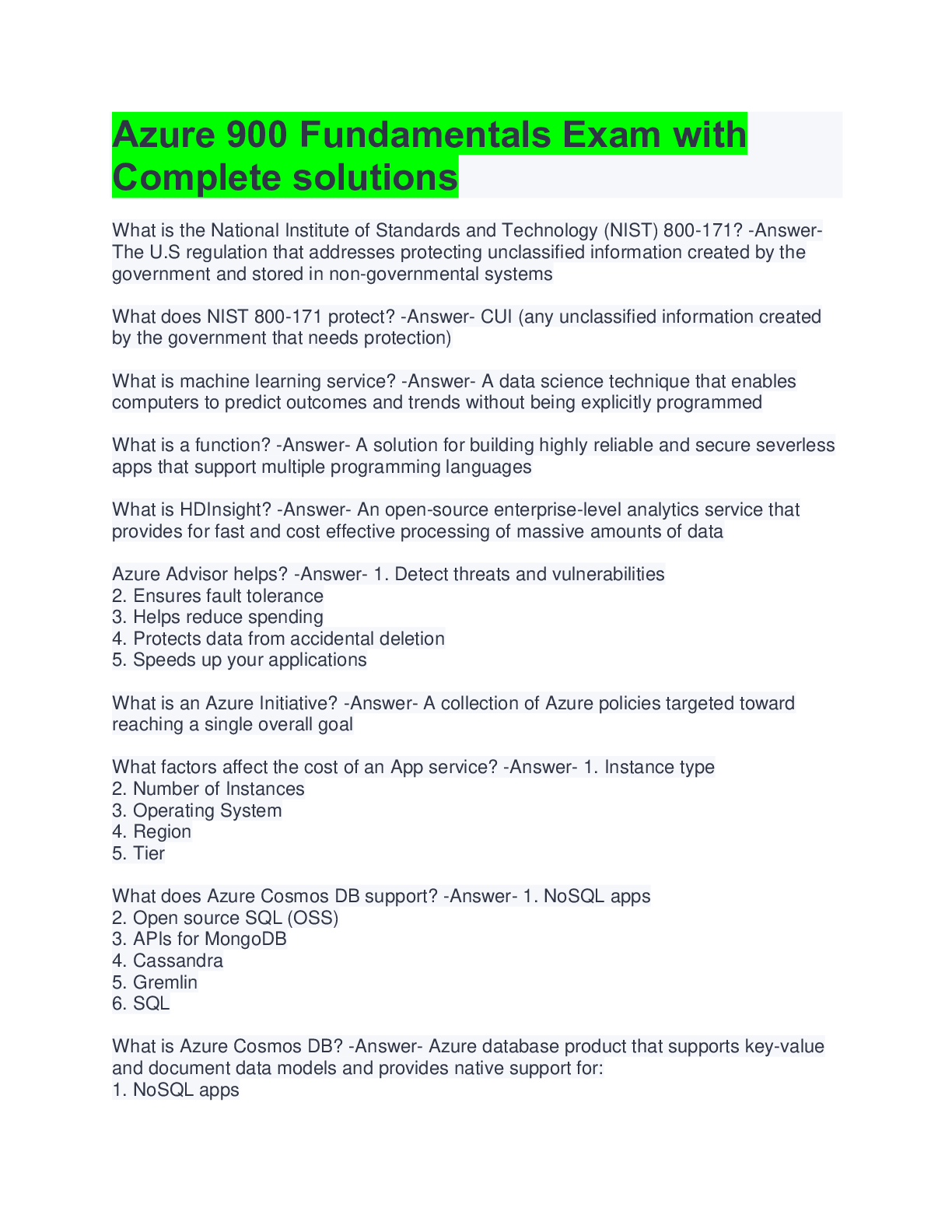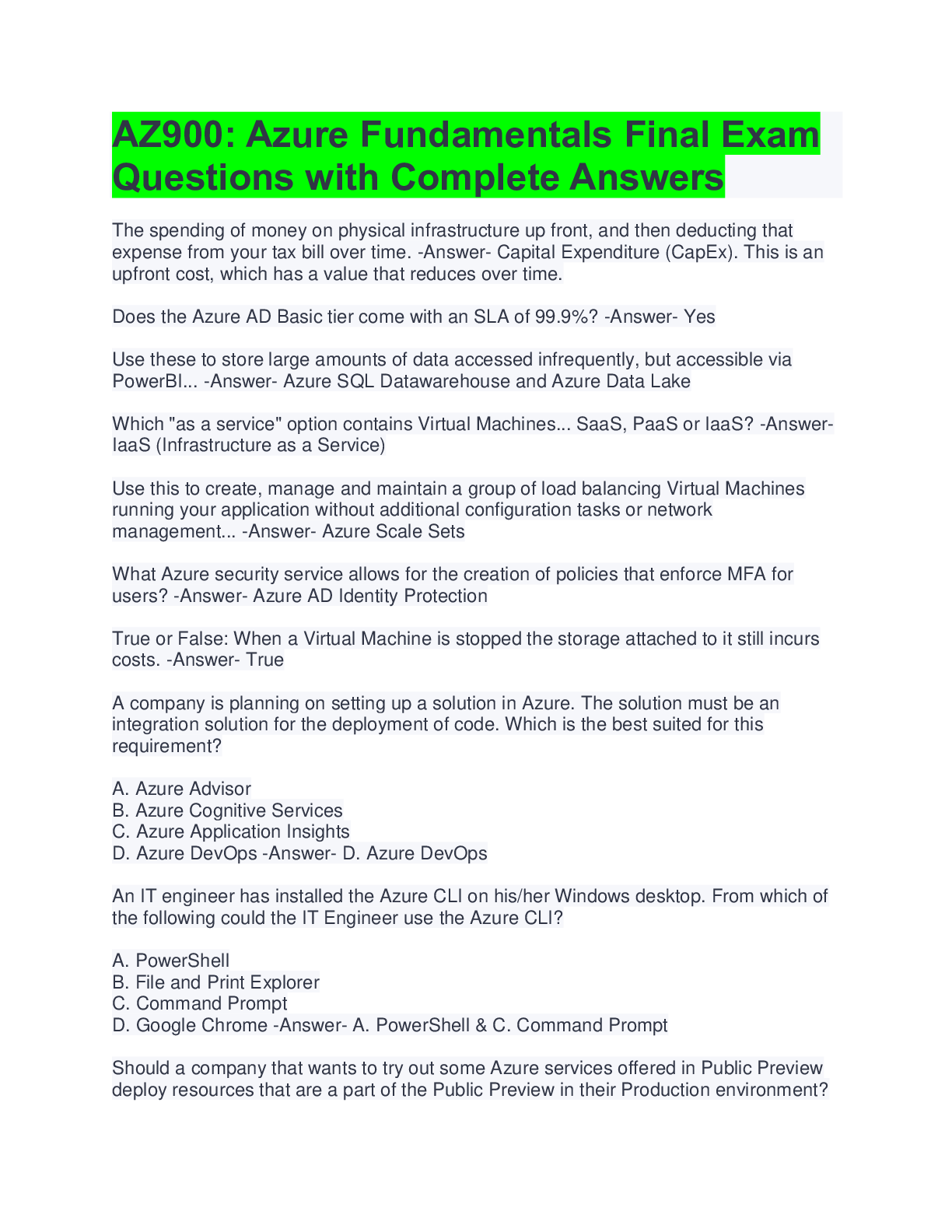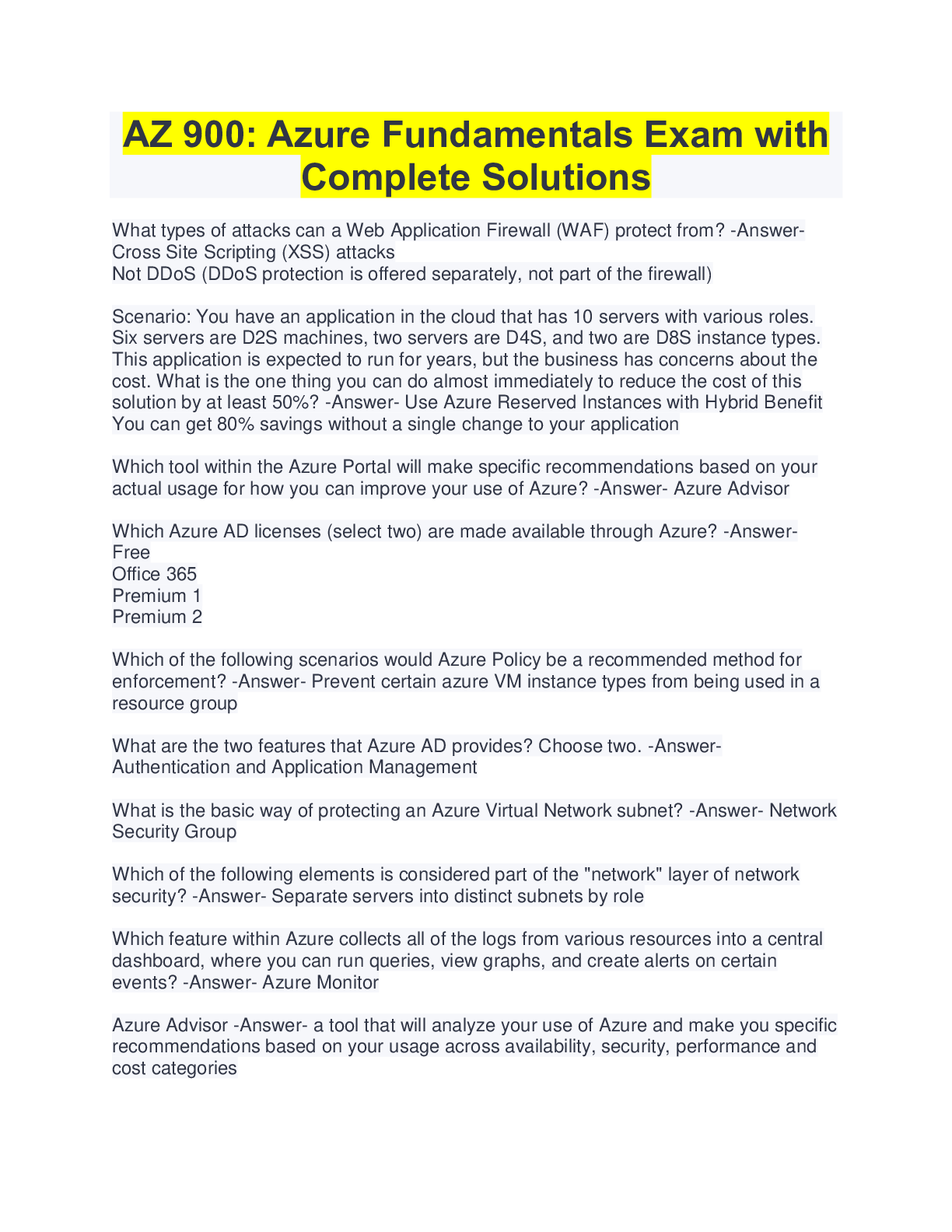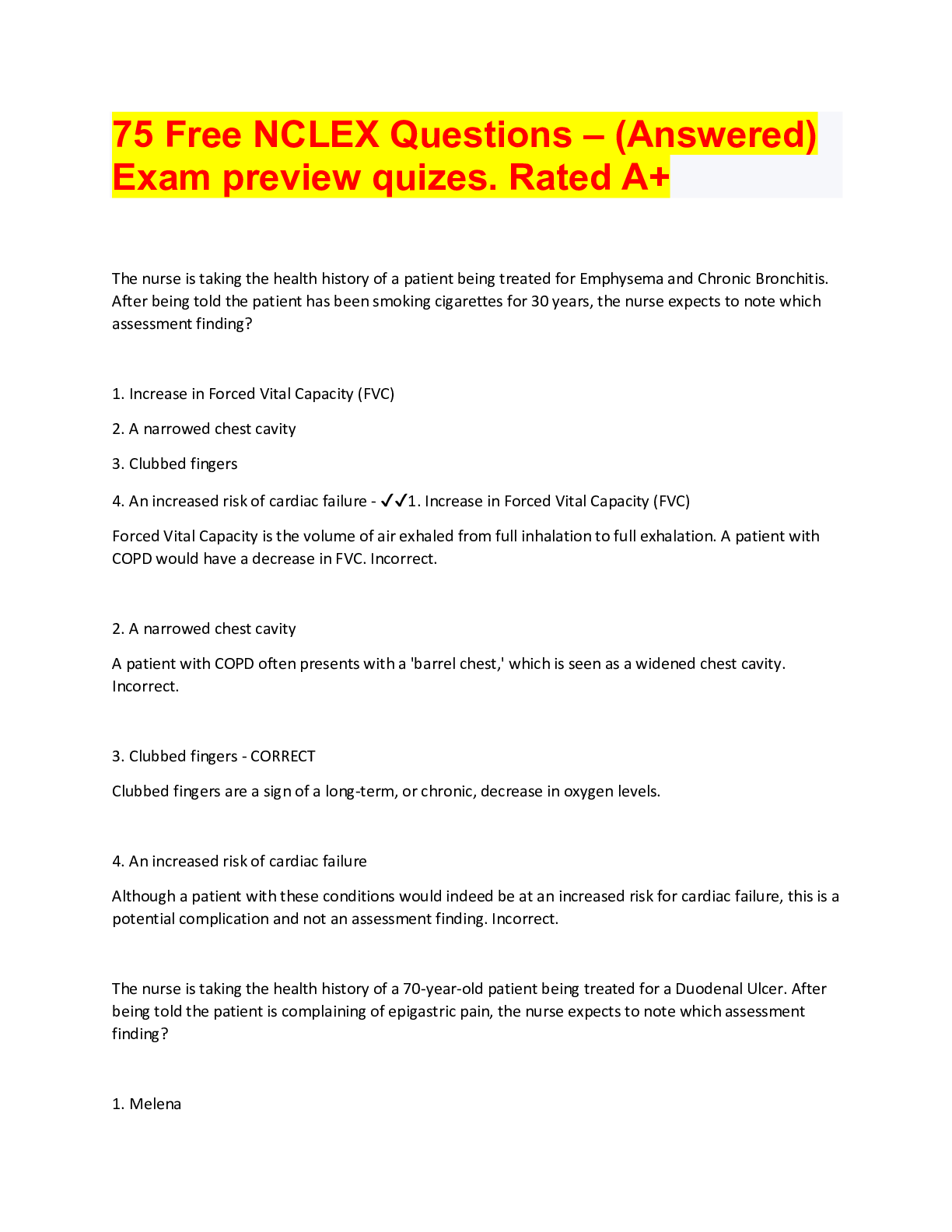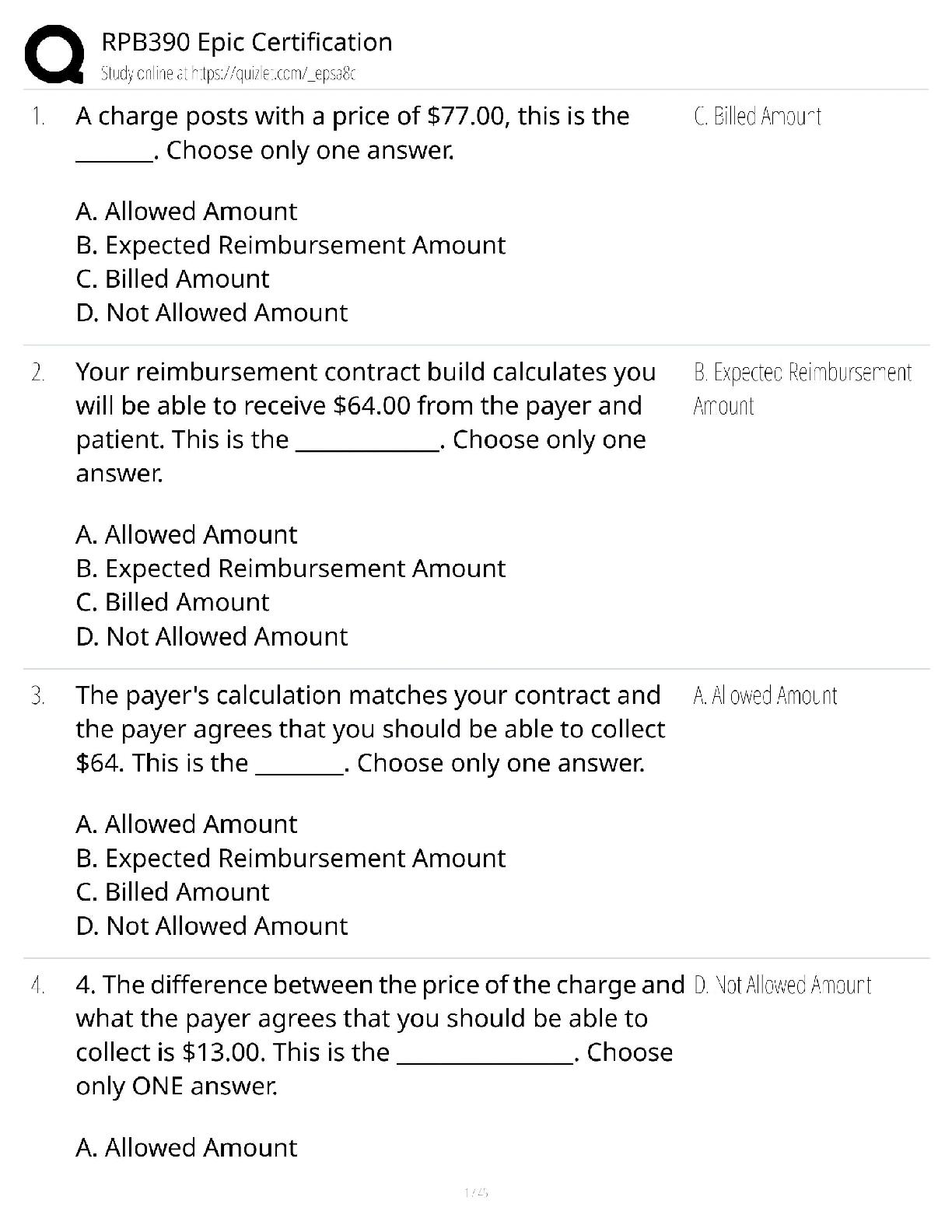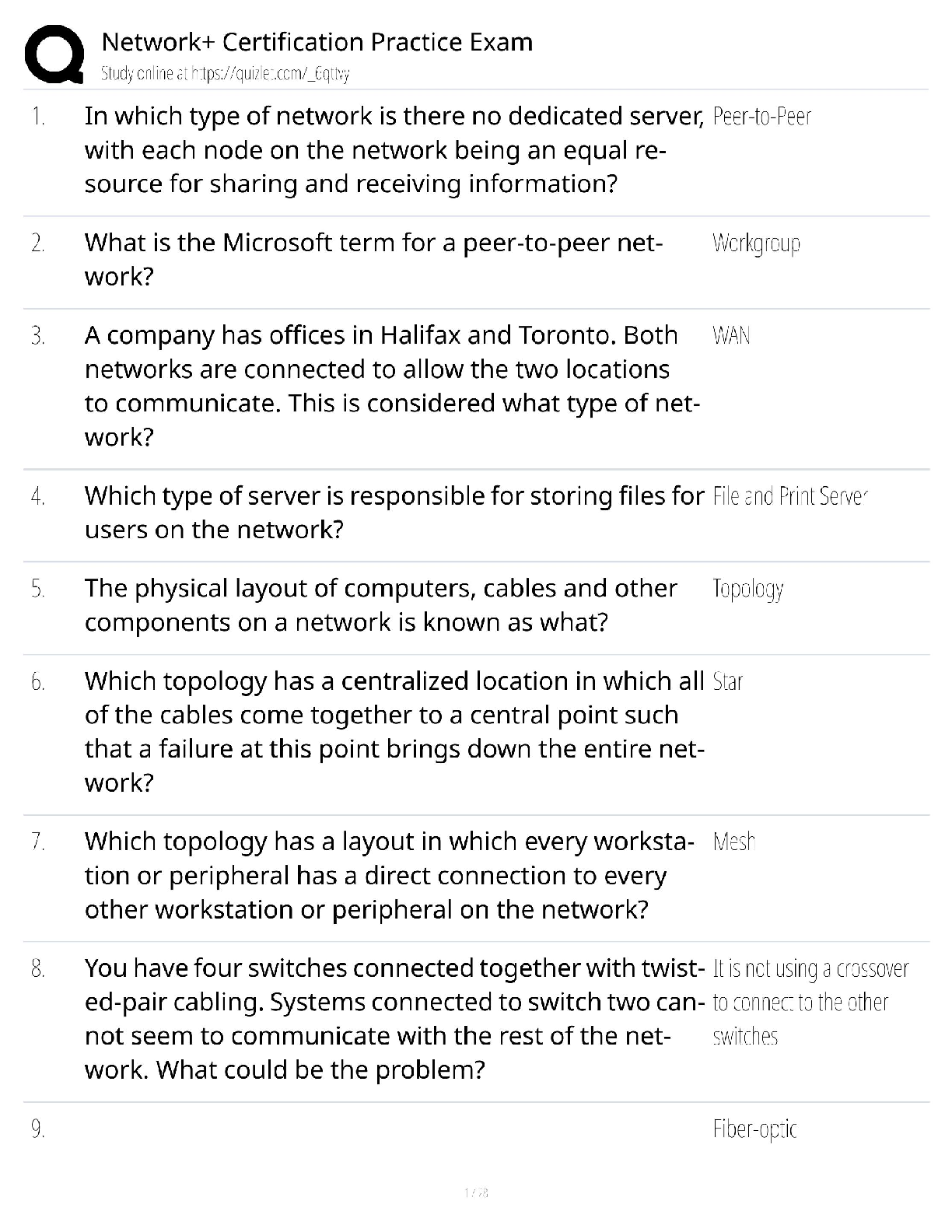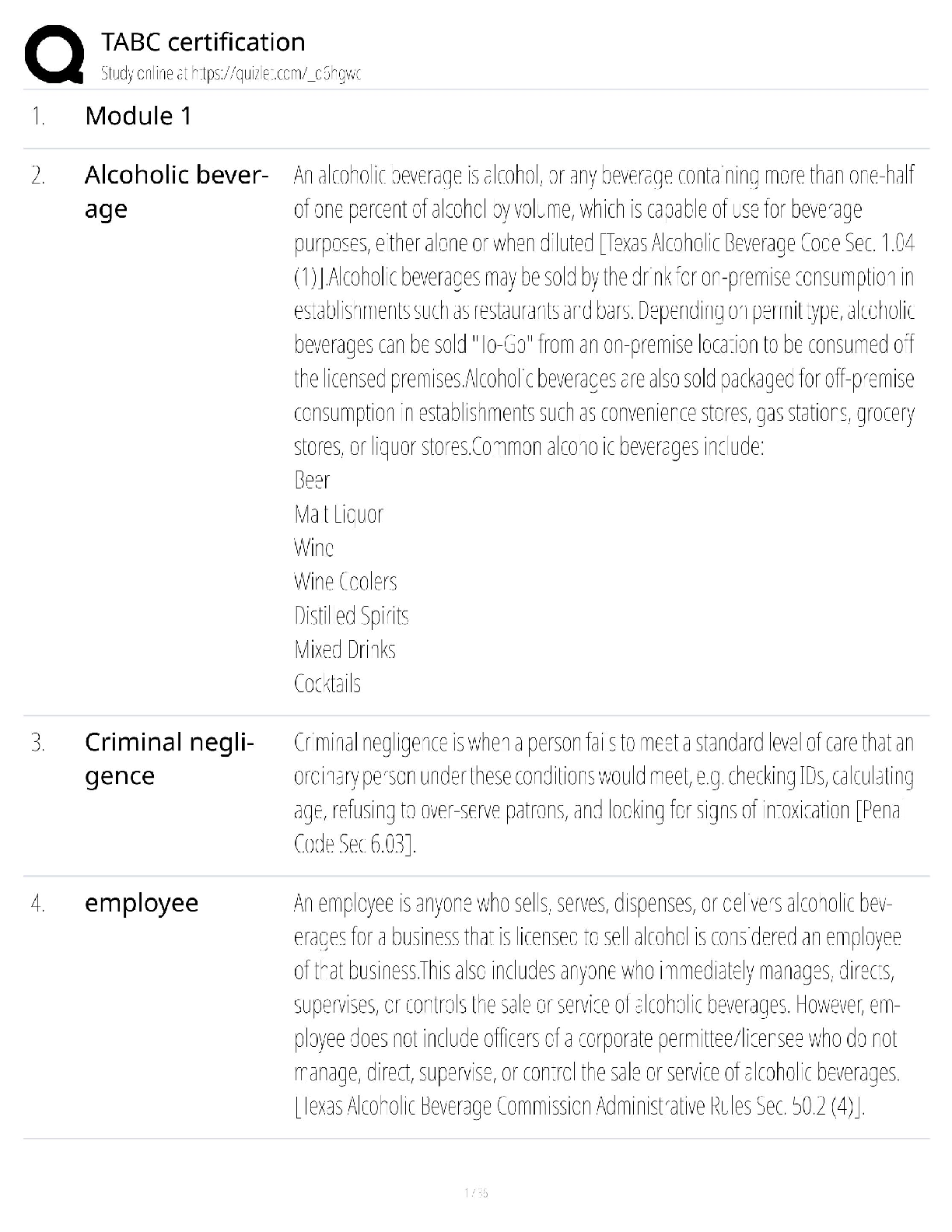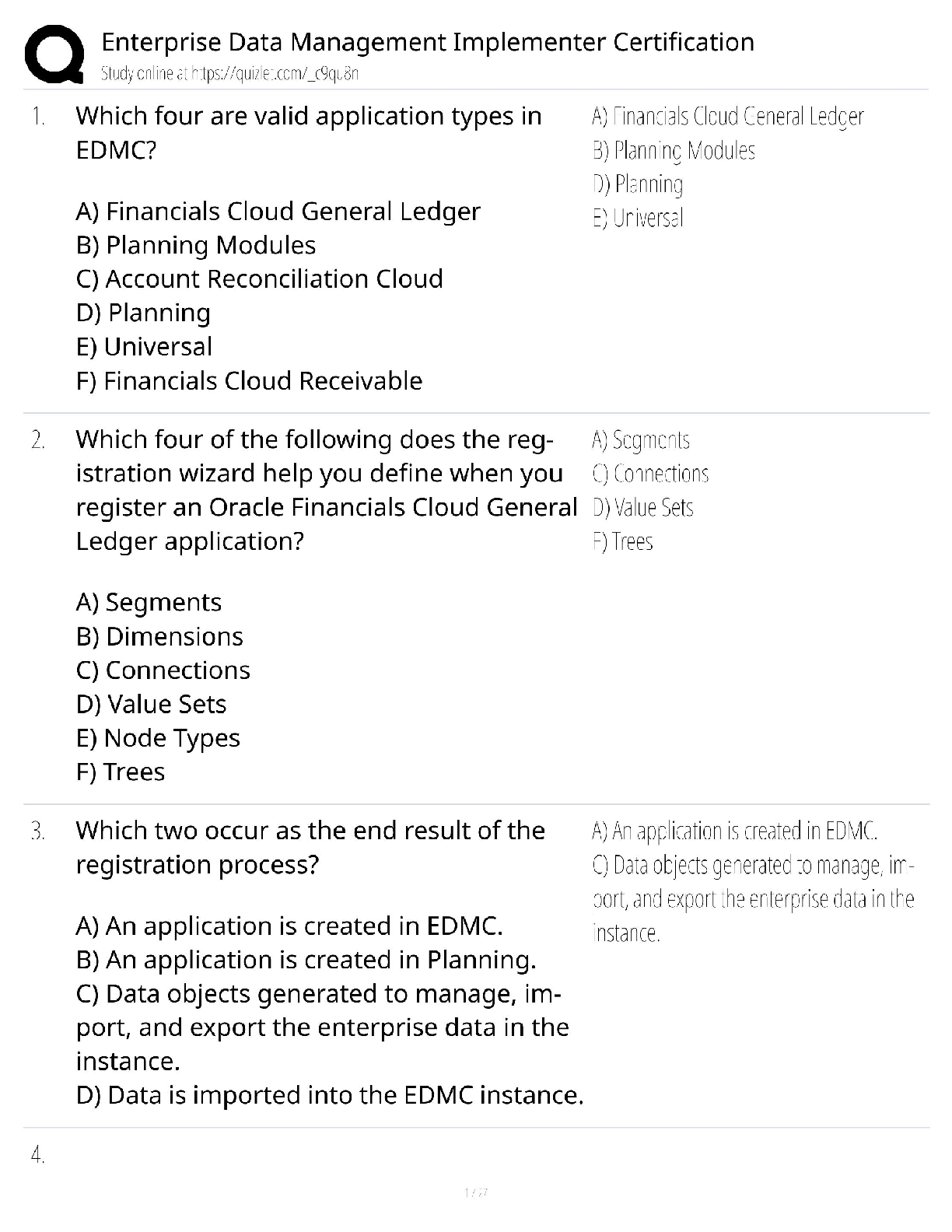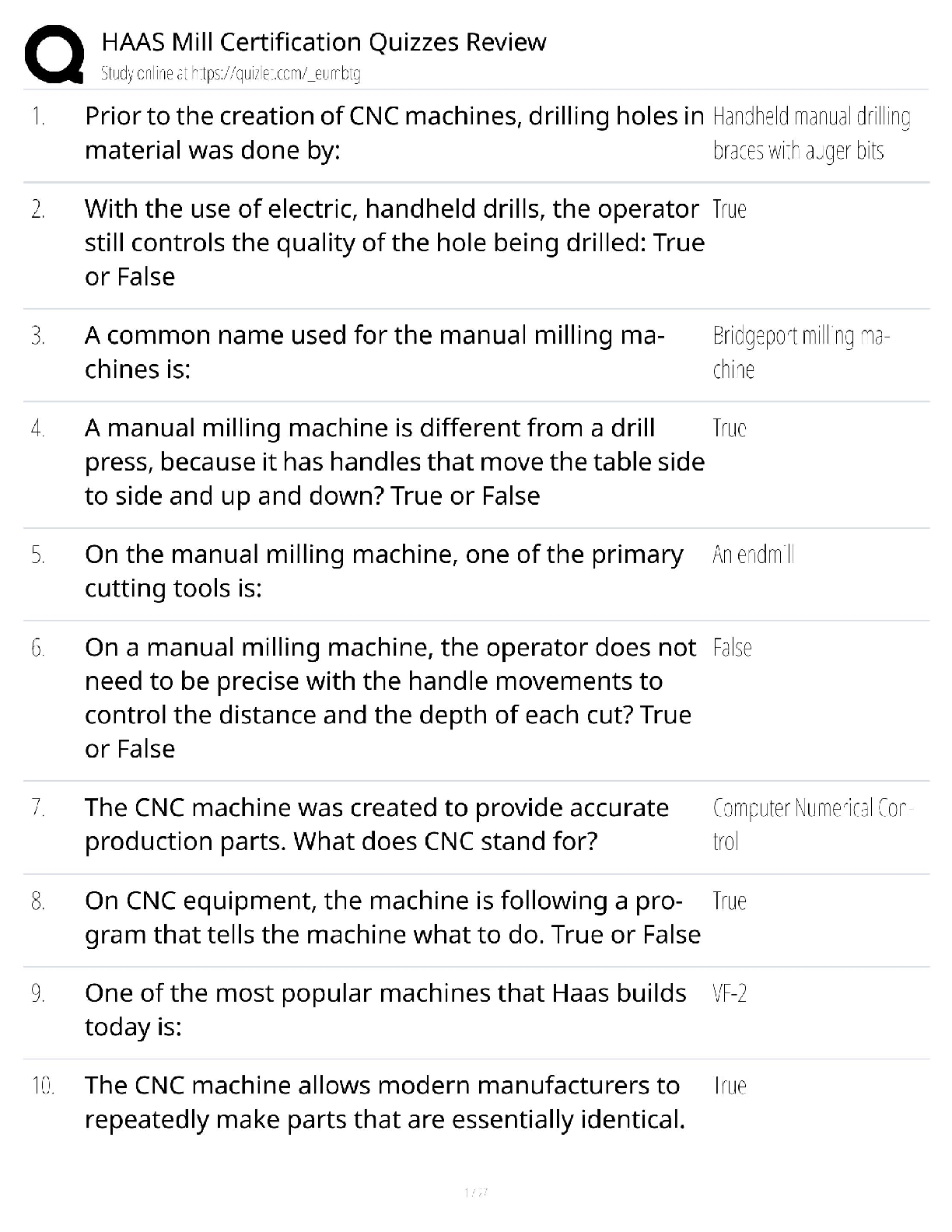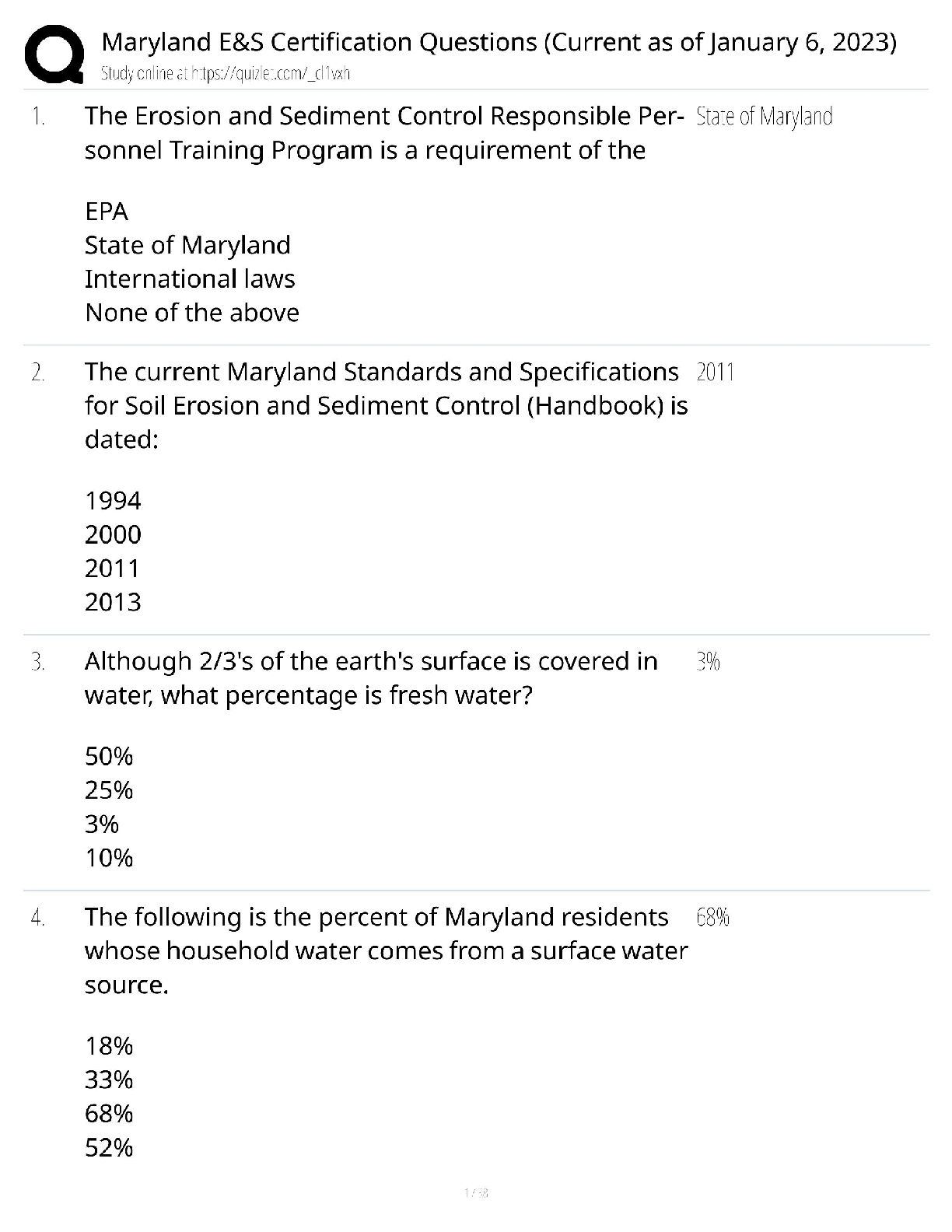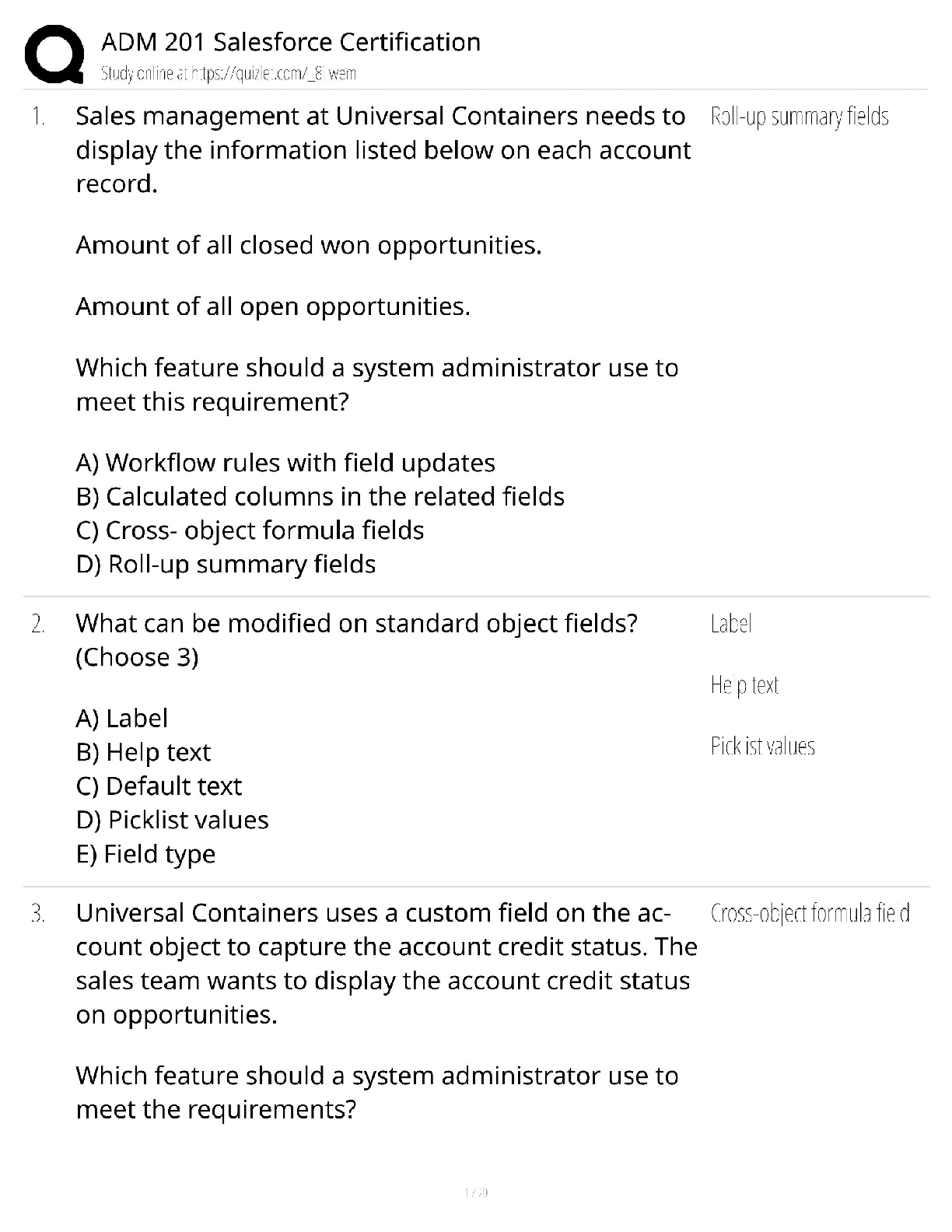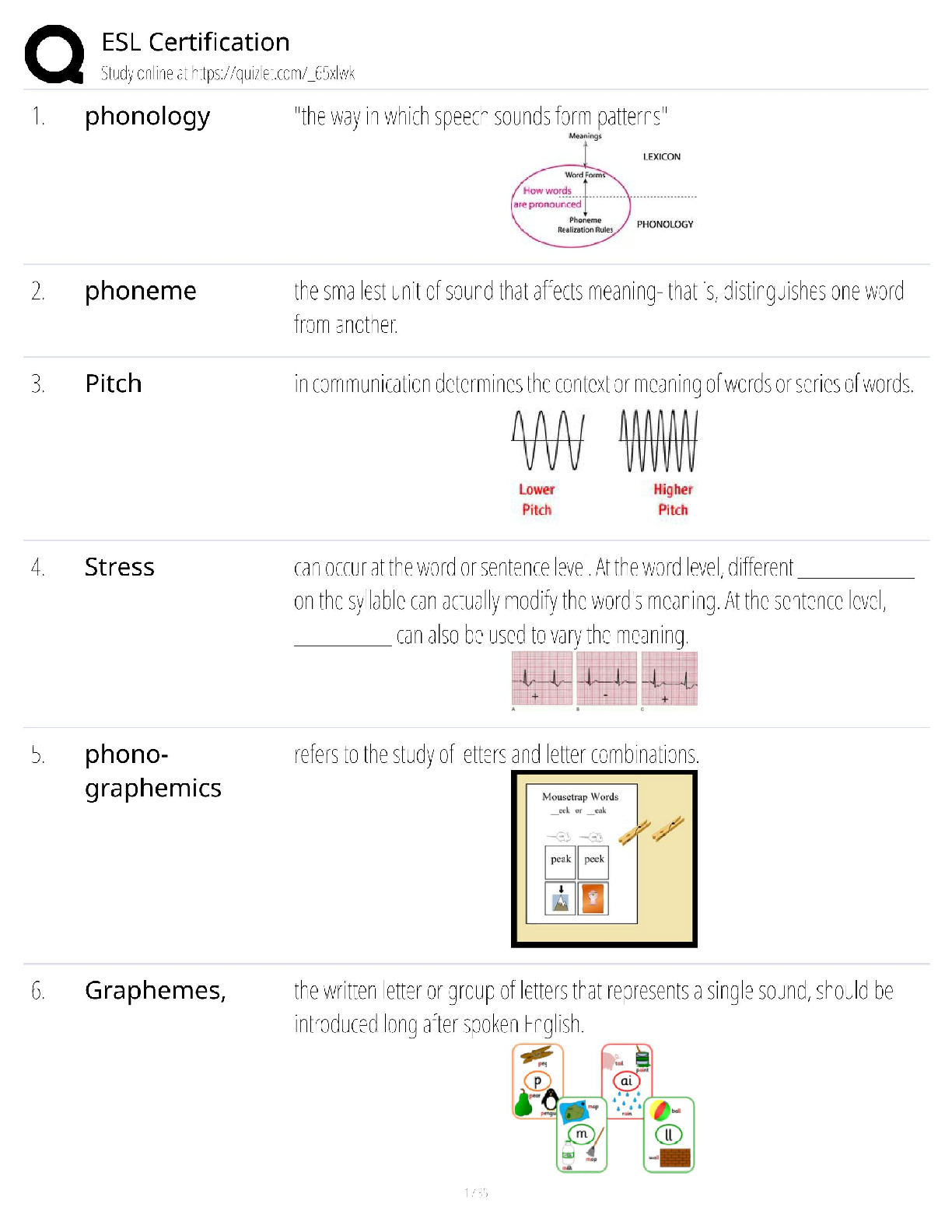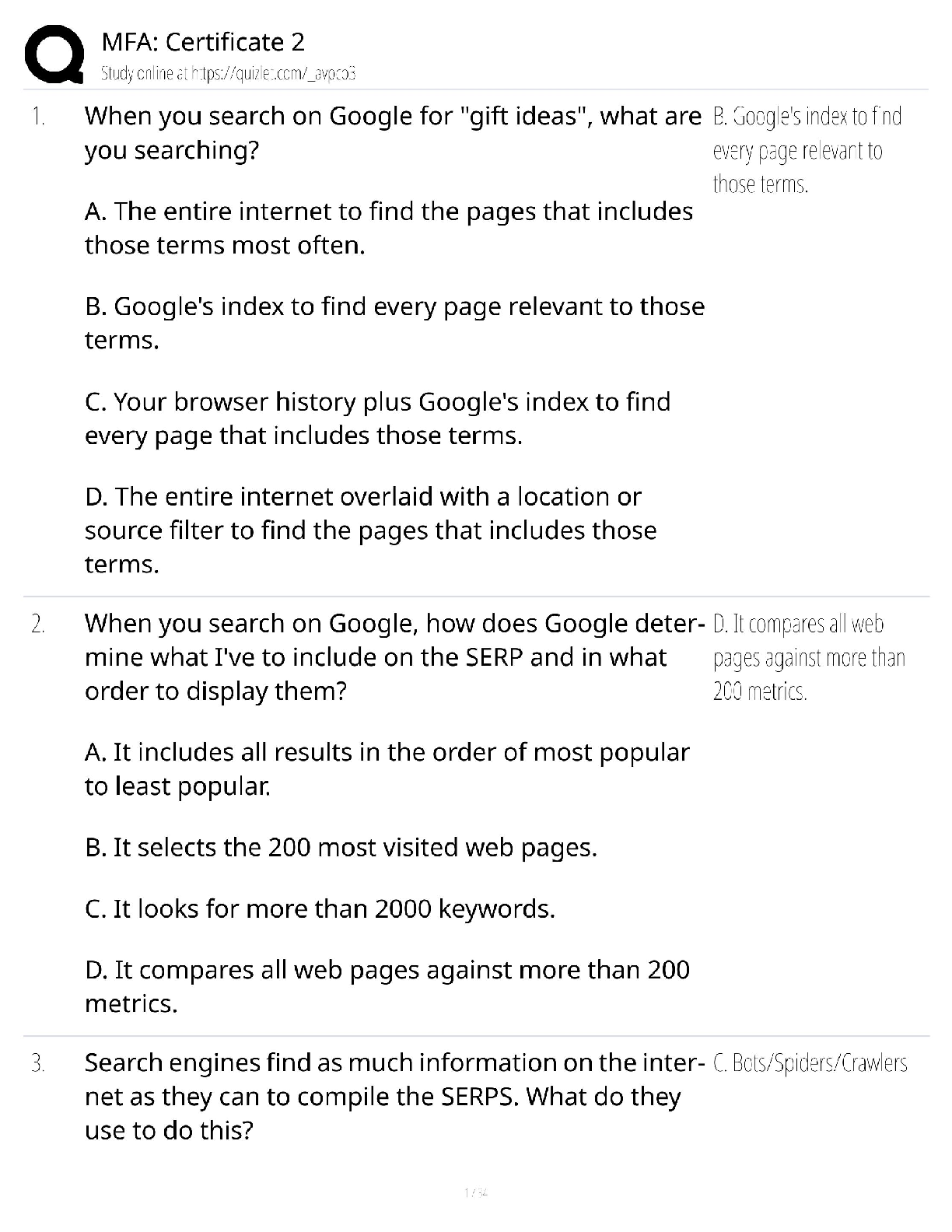Software Engineering > QUESTIONS & ANSWERS > WGU - C857 - Software Quality Assurance (definitions) and study guide 2022 (All)
WGU - C857 - Software Quality Assurance (definitions) and study guide 2022
Document Content and Description Below
WGU - C857 - Software Quality Assurance (definitions) and study guide 2022 CMMI -Answer- as project management, quality management, and engineering all glued together by process management. The ... CMMI® provides detailed practice descriptions to guide the development of technical processes as well as management processes and service processes.However, as previously stated, the main focus needs to be on the organization's vision and business objectives. about supporting measurable business objectives. Types of Reviews -Answer- -peer reviews -project manager reviews -milestone reviews -buddy check -circulation reviews -technical reviews Reviews -Answer- A review is an evaluation of a life-cycle work product(s) or project status to determine if there are any deviations from planned results and to recommend improvement. Reviews are conducted for these reasons: ● Detect defects. ● Remove defects as close to the point of insertion as possible. ● Determine product progress/status. ● Identify potential improvements. ● Produce technical work of a more uniform and predictable quality. ● Gain ownership by the project team. ● Assist employees with cross-training. ● Reduce costs to build and maintain better products. ● Reduce development time. ● Reduce testing cost and time. ● Reduce total system maintenance cost dramatically (as much as 10 to 1 according to recent statistics). Project Manager Reviews -Answer- weekly project meeting that is called by the project manager. the project manager and development staff are in attendance. Representatives from systems engineering, QA, CM, and testing should also be in attendance. items discussed: -tracking of the standard issues of technical activities -cost -schedule performance against the plan. -staffing concerns -resources used vs what was planned for -risks -stakeholder involvement -corrective actions -updating documentation Milestone Reviews -Answer- Formal milestone dates are documented in the project management plan, tracked, and reviewed. Typical milestone reviews include examination of technical progress, planned engineering activities, commitments, and plans. Peer Reviews -Answer- a work product (document, code, or other) is examined by its author and one or more colleagues, in order to evaluate its technical content and quality; human-based testing. types of Peer Reviews: -Buddy Checks -Circulation reviews -Tech reviews -Inspections -Walkthroughs -Structured Walkthroughs Buddy Check -Answer- A buddy check is normally thought of as an informal verification technique in which the life-cycle work product is examined by the author and one other person. The author walks the "buddy" through the life-cycle work product and describes what is intended in each section. The "buddy" offers comments for improvement on technical correctness, style, order of presentation, clarity, and understandability. The author may or may not accept the buddy's suggestions for improvement. used to: ● Improve the life-cycle work product; ● Consider alternative implementations; ● Exchange techniques and style variations; ● Point out problems with clarity and understandability; ● Allow the author to look at the life-cycle work product from a different "angle" or point of view; ● Mentoring of others in the concepts embedded in the life-cycle work product. Circulation Reviews -Answer- Circulation reviews can be informal or follow strict rules. The life-cycle work product is circulated to each reviewer who reviews it and either attaches comments, questions, and recommendations directly on the life-cycle work product or places them into a separate document. -Normally, the author has the authority to accept the reviewers' comments and suggestions or ignore them. Circulation reviews are especially useful in these situations: ● Reviewers are geographically separated and face-to-face or teleconferencing is not possible. ● Individuals who are asked to be reviewers are willing to "work in" the review but not take the time out of their schedule to participate in a more formal review. ● The author is looking for a large cross section of opinions regardless of background or experience. ● A large population of stakeholders must be satisfied. ● The time during which the review must be completed is not a constraint, but the author needs as detailed a look at the life-cycle work product as possible. The objectives of circulation reviews include: ● Improve the life-cycle work product; ● Consider alternative implementations; ● Point out problems with clarity and understandability; ● Point out areas of concern and offer comments and suggestions; ● Gain consensus from a large population of reviewers; ● Gain input from valuable contributors who cannot be present for a face-to-face review. [Show More]
Last updated: 3 years ago
Preview 1 out of 24 pages

Buy this document to get the full access instantly
Instant Download Access after purchase
Buy NowInstant download
We Accept:

Also available in bundle (1)
Click Below to Access Bundle(s)
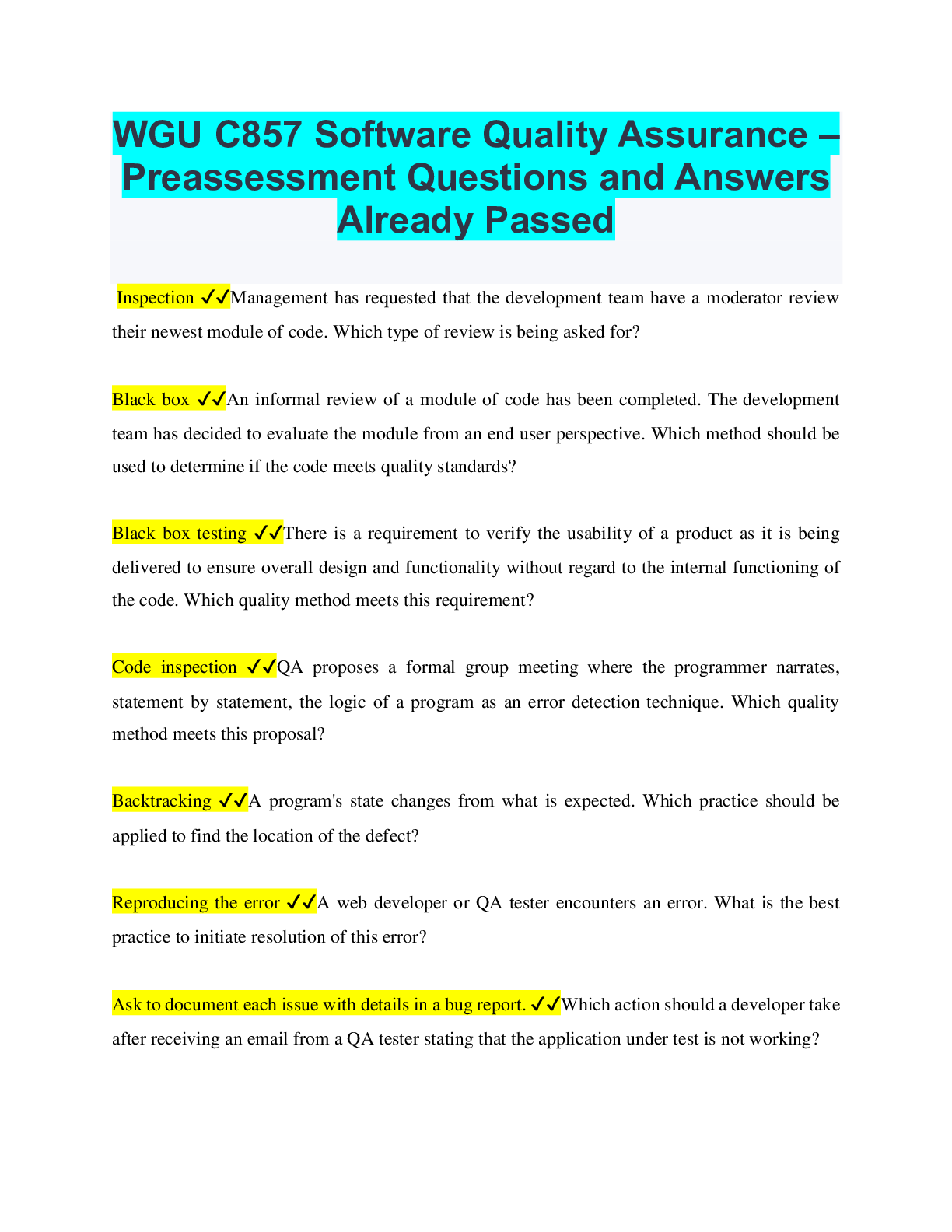
WGU C857 FULL SOLUTION PACK(ALL WGU C857 EXAMS AND STUDY QUESTIONS ARE HERE ,ALL ANSWERED CORRECTLY)
WGU C857 Software Quality Assurance – Preassessment 2022 with complete solution Software QA C857 WGU Latest 2022 Rated A+ WGU C857 Software Quality Assurance - Questions and Answers Already Pass...
By Excel 3 years ago
$15
9
Reviews( 0 )
$8.00
Can't find what you want? Try our AI powered Search
Document information
Connected school, study & course
About the document
Uploaded On
Sep 23, 2022
Number of pages
24
Written in
All
Additional information
This document has been written for:
Uploaded
Sep 23, 2022
Downloads
0
Views
329

